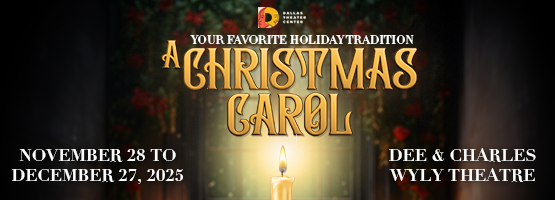In a game of word association, given the word “Impressionism,” one would most likely say “French,” or “Monet.” The word is indelibly associated with the rebellious band of avant-garde artists who mounted the first Impressionist exhibition in Paris in 1874, shocked the establishment, and changed the way we see the world. French Impressionism has become so familiar and ubiquitous that time is ripe to explore a much less familiar part of the story, one that traverses geographies and takes root across the vast landscape of America.
On view at San Antonio Museum of Art (SAMA) from June 11-Sept. 5, the expansive exhibition America’s Impressionism: Echoes of a Revolution, co-organized by the Brandywine River Museum of Art in Pennsylvania, the Dixon Gallery and Gardens in Tennessee, and SAMA, brings together 62 works from a wide range of public and private collections. It is a big show. Featuring more than 40 American artists, the exhibition tells a fascinating and nuanced story of the development of American Impressionism.
“It’s an exciting exhibition because it really does rethink or challenge certain existing ideas about Impressionism and adds something new to the story,” says Yinshi Lerman-Tan, Acting Associate Curator of American and European Art at SAMA. “The exhibition opens a window into the American side of this movement, seeing Impressionism not as a cloistered French movement, but as part of a transatlantic exchange and global artistic interchange in the late 19th century that had an enduring impact on American art.”
The show is organized by place and geography. The American artists who had been to France and even took up residence in Giverny in close proximity to Monet adopted the practice of plein air painting directly from the landscape. They took the techniques and tenets of Impressionism, then came home to spread the gospel in art colonies across the country, from the East Coast to the West Coast, through the Southwest and Texas. “So much of the show is landscape. But across the landscape paintings you’ll see so many different kinds of American geographies represented,” explains Lerman-Tan. “SAMA audiences will be seeing works literally representing San Antonio and learning about how Impressionism was important not just internationally but in Texas as well.”
One of the first paintings visitors will see is Frederick Carl Frieseke’s luminous canvas The Bathers (1914), from San Antonio’s own Marie and Hugh Halff Collection. Frieseke was one of the many American painters who settled in Giverny, next to Monet’s house in fact. A quintessential Impressionist, Frieseke was interested in the effects of sunshine and light on his subjects. The play of dappled sunlight on the trees, the water, and the female figures dazzles the viewer with its shifting patterns and sense of movement.
A scan of the works of Giverny-ites in the first section of the exhibition reveals the direct influence of Monet on these artists’ renderings of places Monet himself depicted. These include Willard Metcalf’s paintings of poppy fields and Monet’s garden, a number of paintings of grain stacks, including one by Theodore Butler, who would become Monet’s son-in-law, and Old Farm, Giverny (1900), a striking work by female artist Lilla Cabot Perry from the SAMA permanent collection., The canvas is vibrant with dashes of pink, yellow, and violet, softening the palette of darker greens, orange, and blue. Perry developed enduring friendships with the leading Impressionists of the day Camille Pissarro, Mary Cassatt, and Claude Monet. She spent nine summers in Giverny, working alongside fellow Americans Theodore Robinson, John Leslie Breck, Theodore Butler, and others.
William Merritt Chase figures prominently in this part of the story. From 1891 to 1902 he taught at the summer school in Shinnecock Hills, Long Island, where he was proselytizing plein air painting to an entire generation of American artists, including many in this exhibition. Some of his most indelible images are of Shinnecock. Seaside Flowers (1897) shows an overcast sky above a scrubby beach, the figures of his wife and children, dressed in white and scattered across the canvas, lend both compositional interest and a sense of emotional intimacy to the lovely seascape.
As Impressionism heads west, new artistic enclaves develop, particularly in Texas and California. “This is my favorite section,” declares Lerman-Tan. “There’s a Euro-centric skew in art history, and in American art history there is a skew toward the East Coast and New York. This section says ‘check it out!’ These artists were really out here innovating!”
Texas artists broadened the dimension of local iconography and identity at a time when the Texas landscape was scarcely explored in American painting. Shaped by their local geographies and environs, these artists expanded the visual rhetoric of the Texas landscape. Beyond Frank Reaugh’s cattle drive paintings, Edward Eisenlohr’s haystacks of North Texas, and Dawson Dawson-Watson’s blooming cacti, San Antonio native Julian Onderdonk’s quietly majestic Hill Country landscapes stand out as something extraordinary.

1 ⁄ 11
John Leslie Breck (American, 1860-1899)
Grey Day on the Charles, 1894
Oil on canvas
18 x 22 inches
Virginia Museum of Fine Arts, Richmond, J. Harwood and Louise B. Cochrane Fund for American Art, 90.151
Photo: Katherine Wetzel/ ©Virginia Museum of Fine Arts

2 ⁄ 11
Theodore Earl Butler (American, 1861-1936)
Grainstacks, Giverny, ca. 1897
Oil on canvas
21 1/4 x 28 3/4 inches
Dixon Gallery and Gardens, Museum purchase by the Dixon Life Members Society, 1991.4

3⁄ 11
Emma Richardson Cherry (American, 1859-1954)
On the Gallery, at the Pines, 1896
Oil on canvas
24 x 36 inches
Collection of Juli and Sam Stevens

4 ⁄11
Edward G. Eisenlohr (American, 1872-1961)
June Fields, 1915
Oil on canvas
24 1/4 x 36 1/4 inches
Dallas Museum of Art, The Barrett Collection, Dallas, Texas, 2007.15.22

5 ⁄11
E. Charlton Fortune (American, 1886-1969)
Feeding Chickens, Monterey, 1918
Oil on canvas
28 x 26 inches
Crocker Art Museum, Melza and Ted Barr Collection, 2010.9

6 ⁄11
Willard Metcalf (American, 1858-1925)
Poppy Field (Landscape at Giverny), 1886
Oil on canvas
10 5/8 x 18 5/16 inches
Collection of J. Jeffrey and Ann Marie Fox

7 ⁄11
Lilla Cabot Perry (1848-1933)
Old Farm, Giverny, 1900
Oil on canvas, 25 3/4 x 32 in.
San Antonio Museum of Art
Purchased with funds provided by the Lillie and Roy Cullen Endowment Fund

8 ⁄11
Cecilia Beaux (1855-1942)
Dorothea in the Woods, 1897
Oil on canvas
53 1/4 x 40 1/4 inches
Whitney Museum of American Art; Gift of Mr. and Mrs. Raymond J. Horowitz, Inv. N. 70.158
Digital image © Whitney Museum of American Art / Licensed by Scala / Art Resource, NY

9 ⁄11
Robert Julian Onderdonk (American, 1882–1922)
Near San Antonio, circa 1918
Oil on canvas, h. 30 3/4 in. (78.1 cm); w. 41 in. (104.1 cm), Gift of Mr. and Mrs. I. L. Ellwood, 84.103. San Antonio Museum of Art. Photography by Peggy Tenison.

10 ⁄11
Childe Hassam (American, 1859-1935)
Point Lobos, Carmel, 1914
Oil on canvas
28 5/16 x 36 3/16 inches
Los Angeles County Museum of Art; Mr and Mrs. William Preston Harrison Collection (29.18.2)
Photo © Museum Associates/ LACMA

11 ⁄11
Theodore Robinson (1852-1896)
Yacht Club Basin, Cos Cob Harbor, 1894
Oil on board, 19 x 22 1/2 in.
Brandywine River Museum of Art
Richard M. Scaife Bequest
The exhibition shows off plenty of Onderdonk’s iconic bluebonnet paintings, including one that hung in the Oval Office during George W. Bush’s Presidency. One of the most spectacular paintings in the room comes on loan from the Lyndon B. Johnson Presidential Library and Museum. Bluebonnets in Texas (ca. 1915) is so atmospheric as to be almost abstract. The color harmonies here are subtle and complex. The vista is majestic yet filled with lyricism and tenderness. It is simply breathtaking.
Hugely important to the Impressionist movement in Texas is Houston’s Emma Richardson Cherry. Having studied in France and with William Merritt Chase in New York, Cherry returned home and organized the first Impressionist show in Texas in 1896 for the Texas Coast Fair. Along with her own paintings, she borrowed works from her extensive network of artist friends and exposed the local audience to the “modern” style of the time. Her paintings of Giverny were among the earliest in situ by an American artist.
On the Gallery, at the Pines (1896) is a wonderful example of Cherry’s mastery of Impressionist concerns, the beauty of the light through the trees, pure colors, transient effects, quick strokes that make the air quiver, Cherry’s mother and daughter in a moment of quiet play.
The Panama-Pacific International Exposition of 1915 was instrumental in bringing Impressionism to California and the West Coast. Campbell Colin Cooper’s Palace of Fine Arts, San Francisco (1916) is a beautiful nocturnal depiction of the monumental building that was constructed for the event. With typical Impressionist brushwork, the reflection of the Beaux-arts landmark shimmers in the lagoon under a star-lit sky.
The increasing importance of the California landscape is evident in the number of seaside paintings in this exhibition. Major East Coast artists, including Childe Hassam and William Merritt Chase, came West for inspiration. E. Charlton Fortune, a leading figure in the Monterey art colony, studied with Chase in New York and also in Carmel when he taught a summer class there in 1914. In Feeding Chickens, Monterrey (1918), Fortune uses bold colors, bright greens, fresh blues, saturated purples, and staccato brushstrokes, displaying a sense of freedom and fancy on her canvas.
Fortune is among many women artists featured in this exhibition. In fact, gender is a major sub-theme in the show. A small room in the latter part of the exhibition examines gender and representation in the Impressionist movement. “You see women both as subjects and artists in the American Impressionist movement,” says Lerman-Tan. “You think about the self-determination of women artists in depicting their own moments of friendship and family.”
Mary Cassatt, the only American woman to exhibit with the French Impressionists, is often thought of as sentimental in her depictions of mother and child, but Lerman-Tan believes there is a way to think of her in a feminist light in terms of women artists being able to access a special kind of intimacy in portraying their own experiences.
The “New Woman” of the 19th and early 20th century sought education and career opportunities, and a rich life outside of the confines of marriage. Cecilia Beaux, Lilla Cabot Perry, Jane Peterson, Emma Richardson Cherry, E. Charlton Fortune—each of these women was an independent spirit who contributed a unique voice to the American Impressionist movement.
There are still many untold stories across the history and geography of American Impressionism. The SAMA exhibition opens a door.
—SHERRY CHENG




